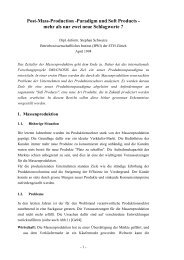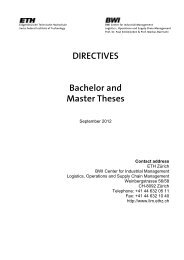The China Venture
The China Venture
The China Venture
Create successful ePaper yourself
Turn your PDF publications into a flip-book with our unique Google optimized e-Paper software.
is often to acquire foreign capital and technology. Foreign investors should be aware of how<br />
their partner will finance their share of the investment. <strong>The</strong> foreign partner often contributes<br />
know-how, immaterial goods, machinery and technology from overseas. Foreign investors<br />
should keep in mind the requirement that only 25% of the foreign investor’s registered capital<br />
contribution to an FIE may comprise technology. 56<br />
<strong>The</strong> foreign investor could also get his share of registered capital financed through loans from<br />
banking institutions or through investment grants from national and international finance<br />
companies such as KfW in Germany. <strong>The</strong> foreign investor as well as the Chinese counterpart,<br />
or the venture itself, could also use Chinese banks for financing their registered capital via<br />
loans. <strong>The</strong>y may procure capital other than the registered capital through preferential-interest<br />
loans if it imports goods or machinery from the US or Europe via special government „soft-<br />
loans“, „mixed-loans“ or export credit programs, the purpose of which is to encourage the<br />
purchase of such goods. Applying for such loans requires certain guarantees, housing or real<br />
security and the approval of the venture through the authorities. <strong>The</strong> US Export-Import Bank<br />
offers bank guarantees to foreign purchasers of machinery and equipment from the US. <strong>The</strong><br />
life of these loan contract is generally one to three years. 57 A foreign investor wishing to<br />
participate in a joint venture with a Chinese company may also raise money overseas by<br />
entering into a joint venture contract with a Chinese party. To raise public funds outside the<br />
PRC for use as registered capital, the investor first needs to set up a company overseas, if one<br />
does not already exist. Currency lending from outside <strong>China</strong> will require the approval of the<br />
State Administration of Foreign Exchange. This method of financing can also be used to raise<br />
capital for a joint venture that already exists.<br />
While a foreign investor must be prepared to initially contribute a good deal of equity to a<br />
venture to satisfy the Chinese regulations regarding registered capital, a wise financier would<br />
also attempt to invest equipment purchased abroad with the help of low-interest loan as a part<br />
of registered capital attributed to the FIE. Alternatively, a foreign party wishing to fund his<br />
enterprise with a Chinese party may prefer to issue shares in a separate overseas company,<br />
and then use the proceeds from the offering specifically for the purpose of funding the joint<br />
ve nture. Leasing of equipment and machinery in <strong>China</strong> provides another suitable alternative<br />
to loans for some investors in that such agreements are convenient to enter into and may have<br />
tax advantages. Another possibility of funding capital is inside financing through cash flows,<br />
56 Buxbaum/Gonzalez, 1998, p. 10; de Waal, 1998, pp. 16.<br />
57 Fan, 1994, pp. 189.<br />
43






